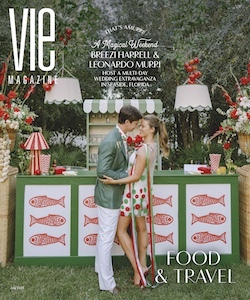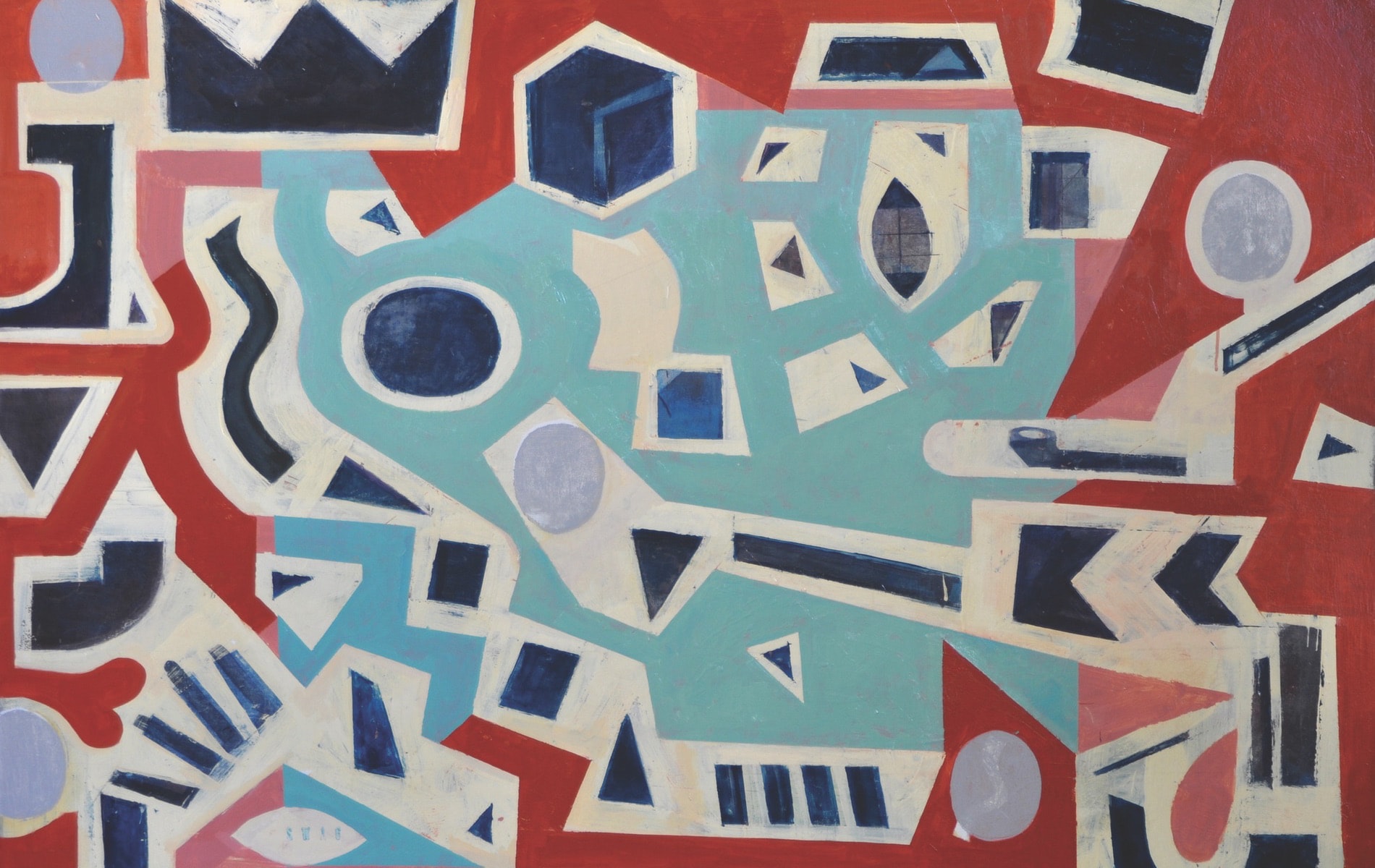
vie-magazine-steve-wagner-art-hero-min
Walk in the Park, 48 x 60 inches
The Narrativity of Steve Wagner
By Melanie A. Cissone | Art by Steve Wagner
“The evolution of a painting is born first of spontaneity,” says Northwest Florida local artist Steve Wagner.
“There are still rough marks at its culmination,” he continues, “but the end, I’ve thought, should feel like it’s on the edge of needing more.”
Conceding that he sometimes suffers at temptation’s hand, overworked paintings are a thing of the past for Wagner. Inspired by a new body of work, he acknowledges his former underappreciation for the intrinsic value of knowing when to put down the brushes. These days, he’s traded uncertainty for the innate. It’s taken hold like never before. “With my new series, the end feels natural to me, like the paintings are where they should be,” he says. With only the addition of protective coatings, the completion of a Wagner painting is now final.
What the seventy-one-year-old artist can’t stop doing is painting. He’s surrendered his every waking moment to abstract expressionism, a new direction that he finds electrifying.
Wagner’s fit stature and muscular arms belie his years. An early riser, he works out at a local gym or swims in the pool at the home he shares with his wife of twenty-nine years in Santa Rosa Beach, Florida, along Scenic Highway 30-A. He’s at the easel in his light-saturated studio by eight o’clock each morning with the family dog, Clementine, a Cavalier King Charles Spaniel. Steve takes a break when “Clem,” as she’s called around the house, starts barking at around eleven o’clock.
Karen Wagner, Steve’s wife, is perennially among the top ten real estate agents along 30-A and is her husband’s primary patron. Only when asked, she offers tactful critiques. Having moved here from Atlanta, the couple will celebrate twenty years of 30-A living next year. Together, they have seen the peaks and valleys on this stretch of paradise.
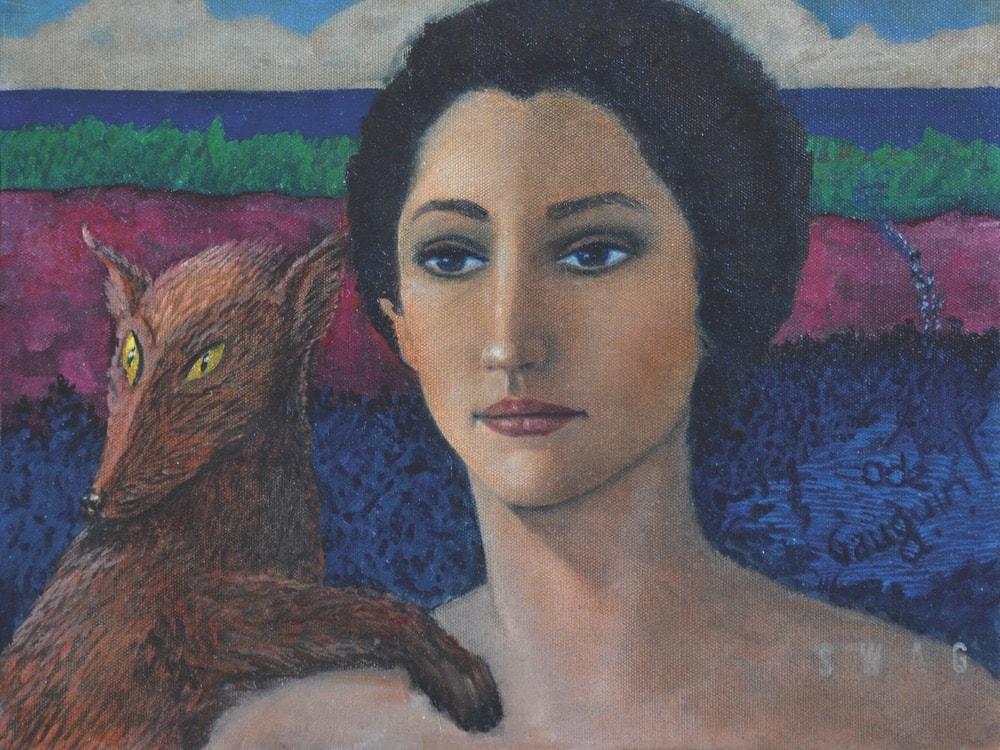
Ode Gauguin, 12 x 16 inches
In the fashion of a bygone era, Steve enjoys a near-daily afternoon game of pétanque, a competitive French game where players toss a steel boule (ball) to get it as close to the bouchon (target ball) as possible. The artist congregates with architects, businesspeople, realtors, and friends to play. He enjoys the comradery and the discourse, as it’s reminiscent of when the artists and thinkers of the 1940s, ’50s and ’60s—Léger, Miró, Braque, Chagall, Matisse, and Picasso, among others—ate, drank and slept at the Colombe d’Or and played boules at a nearby court in Saint-Paul de Vence in the South of France. In the same spirit of bon vivants, Wagner and his pétanque crew discuss politics, art, music, current events, and everything else under the warm seaside sun.
Wagner grew up in a creative household in Newnan, Georgia, a small town an hour’s drive southwest of Atlanta. His mother, grandfather, and great-grandfather were all artistically gifted. The aspiring graphic designer spent two years at the University of Georgia before transferring to Pratt Institute, an architecture, design, and fine arts school in Brooklyn, New York. The beat generation, art school, New York City—Wagner immersed himself in all of it, taking full advantage of the creative, academic, and social scenes, but returned to the South before finishing school. In 1970, he graduated from Auburn University with a BFA in visual design.
After college, Wagner spent nine months backpacking through Europe. Seeing the works of the ancients, old masters, impressionists, and modernists left an indelible mark on him. Upon his return to the States, he launched a career as a graphic designer in Atlanta.
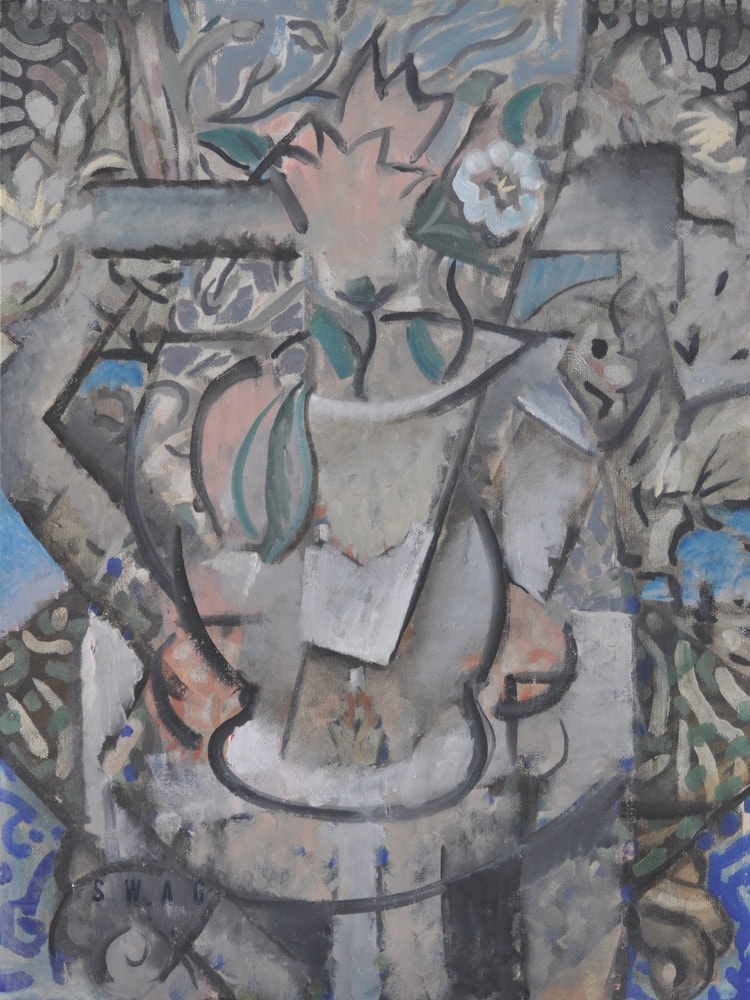
Table Top, 12 x 16 inches
It wasn’t until he was fifty years old that the artist began his intense self-study of oil painting and sculpture, and he’s run the gamut on technique and genre. His atelier walls are a testament to transition or, as he refers to it, “narrativity.” He’s prolific. In an exhibition of his “best of” works, a prospective customer sees the full arc of Wagner’s style. It includes pointillist landscapes, nudes and other figurative oils, still lifes, sculpted marble busts, and cubist paintings, which are his current favorites—“The Embrace,” “Reading the iPad,” and “Morning Smoke.” Just beginning to consume the studio now are his large abstract works, the scale of which Wagner says is “right.”
“Narrativity” refers to a concept in the book Theseus: Vincent Desiderio on Art (2018). In it, Daniel Maidman, one of the masters of figure drawing in America, interviews Vincent Desiderio, a much sought-after modern realist painter, critic, teacher, and lecturer. They discuss art, philosophy, technique, and Desiderio’s Theseus paintings in advance of his January 2018 solo exhibit at the world-renowned Marlborough Gallery.
Desiderio says, “There are three kinds of narrative at work, at play in the artist’s mind when they’re making work. The first one is the dramatic narrative, and that’s simply the subject matter; that’s basically what people call narrative art. The second one is the story of the evolution of the technique, and that is the technical narrative. It’s really the movement of the painter’s mind through the course of the picture, arriving at its terminus, and in the terminus, the implication of everything that went into it is there, even though it’s not necessarily decipherable by everybody.”
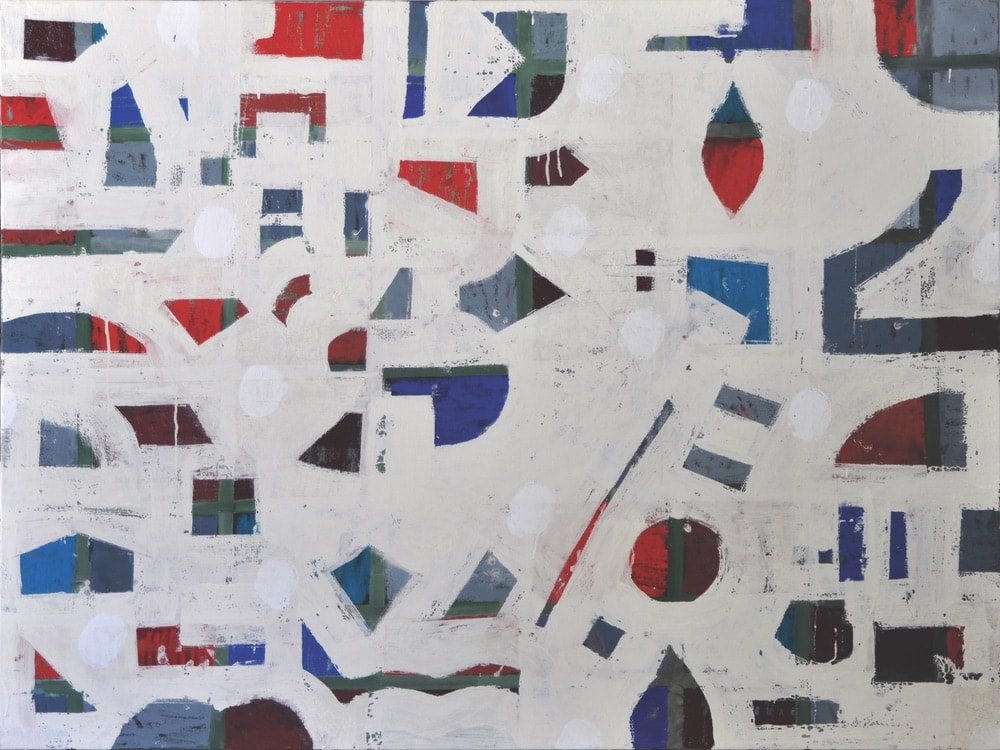
Neanderthal Ancestor, 48 x 60 inches
Maidman reacts, “I call it the ghost of information,” and Desiderio says back to him, “It’s encoded in the work. It informs the painter at every step of the way.”
“But there’s a third kind of narrative,” Desiderio concludes, “which I call narrativity. And that is the presumed effect that the work will have within the narrative of the stream of history.” It’s heady reading, but Wagner devoured it, engineering its messages into his abstract expressionism.
Wagner debunks what he believes are mythical differences between formally trained artists and self-taught, inspired artists. He says, “When student artists are side-by-side in an atelier setting, they are observing and learning on their own. In a formal or academic setting, technical knowledge or ‘technical narrative,’ as Desiderio would say, is conveyed to art students.”
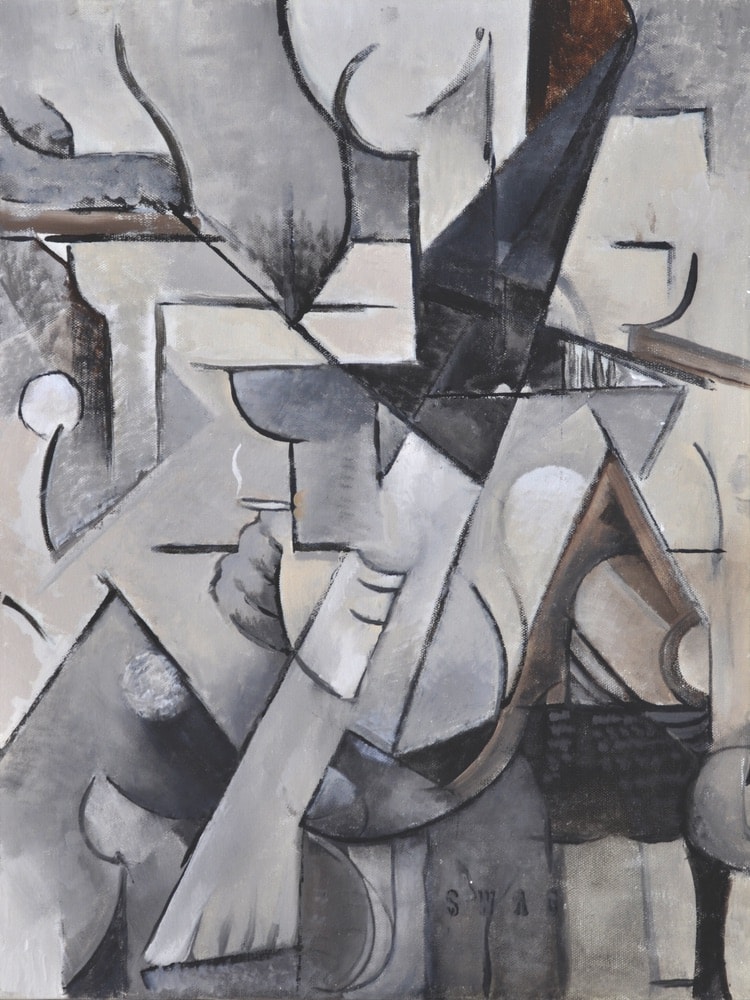
Morning Smoke, 20 x 16 inches
He goes on to affirm, “They both have to evolve, through discovery, from the structural to their uniqueness.” There is an unearthing of resonance that’s incumbent on an artist to realize that no school or peer can teach them how to make art that is uniquely theirs.
Avowing Wagner’s thinking, Desiderio said at a 2015 studio lecture in Costa Mesa, California, “How can people try to draw the kind of blood out of a stone which it takes these days…to make a painting viable; not just self-expression but a kind of viable force within culture?”
Curiously, Wagner says, “For me, there’s a stream of consciousness having to do with the spirit world, which is how I connect. When I get into moving the paint on the canvas, something takes over.
Curiously, Wagner says, “For me, there’s a stream of consciousness having to do with the spirit world, which is how I connect. When I get into moving the paint on the canvas, something takes over. That something is loud and quiet at the same time. Both ultimately resonate with the viewer. It’s my own ‘ghost of information’ that’s transitioning me away from the typical and toward a different, inspired path. My influence now is the innate, from inside.”
Wagner, a Leo, reads his personalized Astrodienst horoscope daily and has had a reading of his Akashic record. From the Sanskrit word for “atmosphere,” Akashic records are, according to Wikipedia, “A compendium of all human events, thoughts, words, emotions, and intent ever to have occurred in the past, present, and future.” His Akashic reading, coupled with findings from a 23andMe DNA test, resulted in Wagner uncovering personal inspiration in his abstract expressionism series.
The painter’s genetic code derives, in part, from the Neander Valley in modern-day Germany, where the first bones of Neanderthal Man, the 200,000-year-old distant biological cousin to Homo sapiens, were discovered 160 years ago. Wagner’s not part caveman, but with twinkling eyes, he riffs, “I love the idea that I have Neanderthal in me.” He asserts, “My Akashic record and my DNA tie me to a history that I didn’t know I had, a history that’s before anyone’s time.”
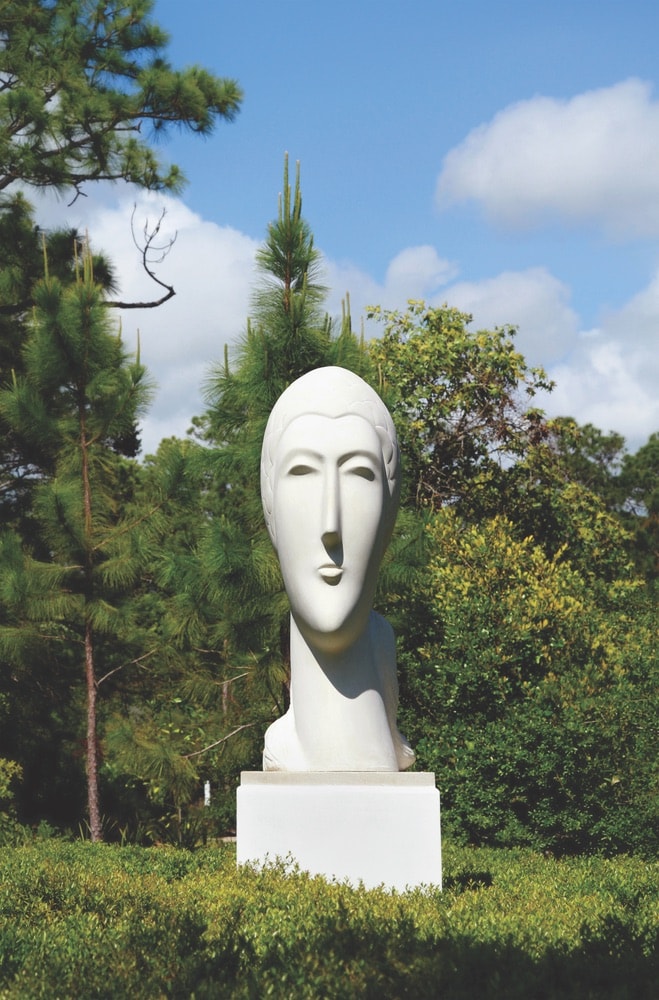
Leda, stone sculpture on display in Alys Beach, Florida
Armed with the vibrational pneuma of all that was, is, and will be, Wagner says, “I feel like I’ve gotten to a place where I can create meaningful art.” Pondering this good spot in life, he says, “But I can’t verbalize a painting while I’m painting it.” Short of a Jack Putter experience in the film Innerspace, truly intuiting the thinking behind what another person creates is a provocative challenge. It can be equally demanding for the artist to discern what his mental attitude and musings were when the brush, paint, and hand moved along the canvas.
Wagner asks, “So, how do you talk or write about that?”
More than thirty years after his death, a fabled manuscript by twentieth-century painter Mark Rothko surfaced in warehouse storage. Reflecting on why his father never ushered his writings to publication, Christopher Rothko wrote in the introduction of The Artist’s Reality: Philosophies of Art (2006), “Like music, my father’s artwork seeks to express the inexpressible—we are far removed from the realm of words. From their lack of identifiable figures or space to the lack of titles, my father’s paintings make clear that reference to things outside the painting itself is superfluous. The written word would only disrupt the experience of these paintings; it cannot enter their universe.”
Rothko the younger also writes, “I think he kept the book to himself because he feared that by offering people the beginning of an answer, or the illusion of an answer, to his artwork, they would never find a more complete one, perhaps never even ask the necessary questions.”
Wagner strives to elevate the collective artistic consciousness of Northwest Florida visitors and residents by calling on them to seek the inexpressible in art, to demand the exceptional, and to inquire. He encourages private studio visits and a curatorial interest in his work. Referencing a popular keepsake item bought by many tourists in the area, he throws down the gauntlet and says, “Buy original art and pearls.”
Steve Wagner is a thoughtful, well-studied, and introspective artist.
With intellectual curiosity as his mainstay, Steve Wagner is a thoughtful, well-studied, and introspective artist. He challenges himself daily by looking inward, reawakening his calling at every brushstroke, and questioning his work. While gazing at his horoscope on interview day, he muses about his own imprimatur in the world beyond his studio as a Cheshire grin unfolds across his face. What did it say? “Harvest the fruits of effort that once seemed to be in vain.”
— V —
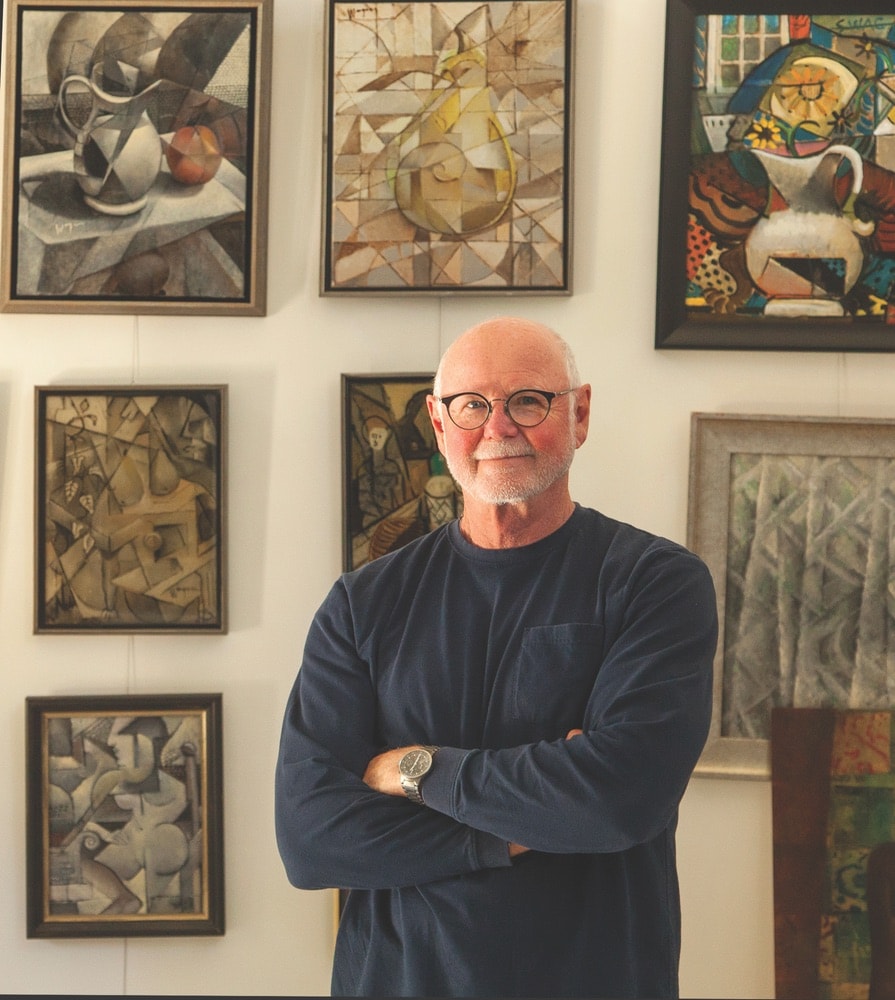
Artist Steve Wagner
For private studio visits, call or text (850) 830-3495. Visit SteveWagnerArt.com or Instagram @stevewagnerart to see more.
New York City transplant to the Emerald Coast Melanie Cissone has been a freelance writer for twenty years. A patron of the arts, she is inspired by beautiful architecture and design and loves learning about people’s backgrounds, especially over a dry Italian red wine.
Share This Story!
KEEP UP WITH THE LATEST STORIES FROM VIE



